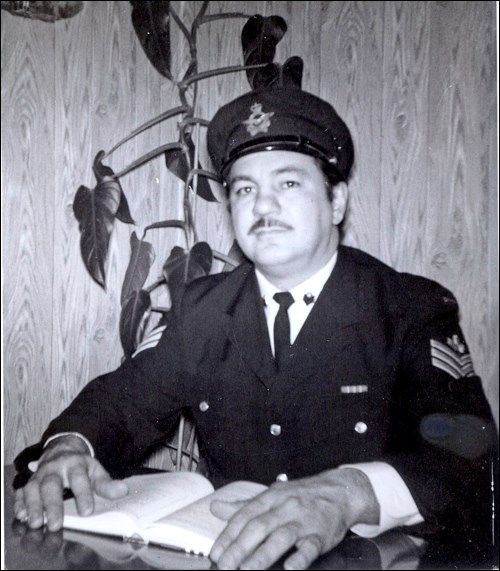In December 1951, Antoine “Toni” Boyer ran into Military Recruiters from North Battleford who were looking for potential recruits. After a discussion and basic tests, Boyer signed on the dotted line in January of 1952.
This was the time of the cold war, between the Western Nations and the Russians. Russia was trying to claim West Germany after the Second World War, which caused a buildup in arms by member states of the North Atlantic Treaty Organization.
In January of 1952, Boyer attended 12 weeks of basic training in St. Jean Garrison, Que. After basic training Boyer moved on to trade school in Amber, Ont. after which he was posted to Tactical Air Command headquarters in Edmonton, Alta.
He worked in Personnel Branch of the command headquarters.
In October 1954, Boyer received orders that he was to be transferred overseas to No. 4 Fighter Wing headquaters in Bade Solingen, Germany. At this time, Canada had four fighter wings in Europe, with two in Germany and two in France.
Boyer was employed in the personnel movements department. Recalling his time there, Boyer said “it was nerve racking, as we were on constant alert. We were called out to take our post with rifles and live ammunition.”
He spent one year at No. 4 Fighter Wing headquarters and before being transferred to No. 1 Air Division in Metz, France where he was employed in the air operation centre as statistic co-ordinator. All statistics there were submitted to supreme headquarters, Allied forces in Europe and other NATO aAgencies.
In 1958, after three years in France, Boyer returned to Canada and was posted to Cold Lake, Alta. His air force posting to Cold Lake found him employed at the Central Experimental and Proving Establishment, where CEPE was testing and proving air armament.
Boyer, now a sergeant, stayed in Cold Lake for six years and in 1964 he was transferred to 41 RCAF radar squadron in Barrington, N.S. Boyer served as non-commissioned officer in charge of personnel movements of approximately 2,000 individuals.
In 1967 he was transferred to Canadian National Defence headquarters in Ottawa, Ont. Here, Boyer was chief administrator in the director general aerospace systems division, where he was administrator to approximately 140 aerospace engineering officers and civilian engineers.
During this period, Boyer was made secretary of the senior non-commissioned officers. Boyer was credited for his diplomacy and good will during a transition as three services were amalgamated at the time. In total, Sgt. Boyer spent six years assigned to Ottawa.
In 1973, Boyer was transferred to Canadian Forces recruiting centre, once again returning to Edmonton, Alta. Here, Boyer’s job was to process and test recruits. After one year, Boyer was then posted to Western Command Recruiting Zone headquarters in Edmonton’s Griesbach barracks. Boyer was given the tasks as administrator to nine recruiting centres across the west.
With 25 years of service, Sgt. Antonio Boyer earned the 25-year good conduct service medal with GASP and the NATO Europe service medal.




